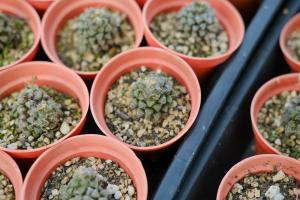Do Plants Sweat Water
Have you ever wondered if plants sweat like humans do? The short answer is, yes! Plants release water through small openings on their leaves called stomata. This process is known as transpiration and is similar to sweating in humans. So, just like us, plants too sweat to keep cool.
The Science Behind Transpiration
Transpiration is the process by which plants release water vapor into the atmosphere through their leaves. The water drawn from the roots of the plant travels through the stem and into the leaves, where it evaporates through small pores on the underside of the leaves. This water vapor then diffuses out of the plant and into the atmosphere.
This process is crucial for plants as it helps in maintaining the balance of water in their systems. The water lost through transpiration is replaced by the water absorbed by the roots. It also helps in transporting nutrients and sugars from the roots to the other parts of the plant.
Factors that Affect Transpiration
Several factors influence the rate of transpiration in plants. These include:
Temperature: As the temperature increases, the rate of transpiration also increases.
Humidity: High humidity reduces the rate of transpiration, while low humidity increases it.
Wind: Wind increases the rate of transpiration by removing the water vapor from the leaf's surface.
Light: Plants transpire more in the presence of light as they photosynthesize and produce more sugars and carbohydrates that need to be transported to other parts of the plant.
Plants have adapted to these factors to regulate their transpiration rates. For example, plants in arid regions have thick, waxy leaves that reduce the rate of transpiration, while plants in humid regions have thinner, more porous leaves that allow for higher rates of transpiration.
Benefits of Transpiration
Transpiration is a crucial process for the survival of plants. It maintains the balance of water, nutrients, and sugars in their systems. It also helps in regulating the temperature of the plant, as the water vapor that is released carries away excess heat. Additionally, transpiration helps in the circulation of sap and in the absorption of minerals and nutrients from the soil.
Transpiration also has a significant impact on the environment. The water released through transpiration contributes to the water cycle, where it condenses to form clouds and eventually falls as rain. This process helps to replenish the water in the soil, rivers, and lakes.
The Bottom Line
So, do plants sweat water? Yes, they do! Transpiration is the process by which plants release water vapor through their leaves. This process is crucial for the survival of plants and has a significant impact on the environment. Next time you see a plant or tree, remember that just like us, they too sweat to keep cool.

 how many times do yo...
how many times do yo... how many planted tre...
how many planted tre... how many pine trees ...
how many pine trees ... how many pecan trees...
how many pecan trees... how many plants comp...
how many plants comp... how many plants can ...
how many plants can ... how many plants and ...
how many plants and ... how many pepper plan...
how many pepper plan...






























